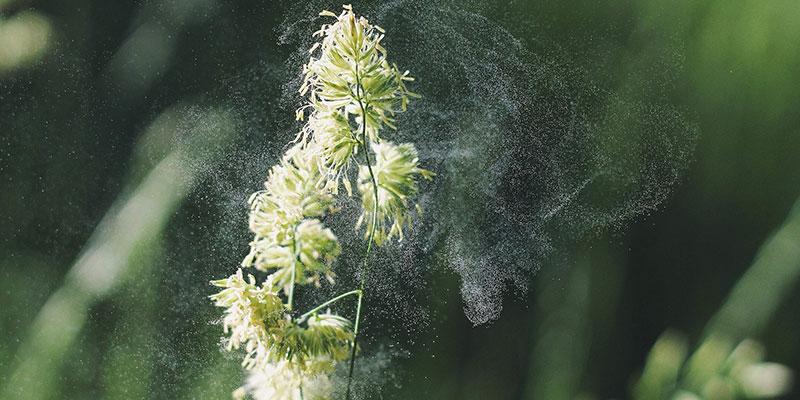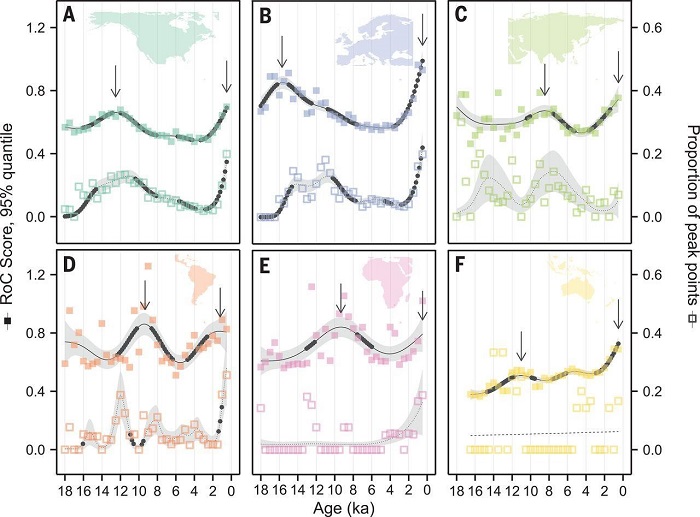Pollen analysis: What is it? And why is it useful?
PhD student Jonny Gordon considers the part pollen plays in providing ecologists with a record of past plant communities.

The magnitude and direction of biodiversity change is a much researched and hotly debated topic. When it comes to quantifying floral (plant) biodiversity change, there is frequently a focus on relatively recent time scales, timescales for which documentary records or remote sensing data are available. But if we are interested in longer-term trends in floral compositions and diversities, spanning millennia rather than decades/centuries, where do we turn?
The pollen record is one option. Pollen is a component of many plant species’ reproductive systems, and its release enables fertilisation, the production of fruit and seeds and ultimately the creation of the next generation. Aside from the very useful function of eventually feeding all of humanity, pollen also provides ecologists with a record of past plant communities. Most pollen does not end up fertilising other plants but ends up swirling around the lower atmosphere, with some blowing/washing into lakes and bogs (amongst other places) and becoming deposited into their sediments annually. By extracting sediment cores from these lakes and bogs and quantifying the different pollen types present at different layers along the core, the history of vegetation in the environment surrounding the lake/bog can be reconstructed through time (Figure 1).

Figure 1: Reconstructing the vegetation history of a landscape using pollen sampled from sediment cores. Artwork by Milan Teunissen van Manen.
By reconstructing past vegetation, we can detect significant events in the landscape histories of different regions. In Europe, for example, we can observe the colonisation of higher latitudes by tree taxa such as Pinus (Pine), Betula (Birch) and Quercus (Oak) after the end of the last ice age (11,700 years ago), the arrival of domesticated crops beginning in the Neolithic (8,000-6,000 years ago) and the acceleration of wide-scale deforestation in the Bronze and Iron Ages (4,000-2,500 years ago).
Alongside these important insights, long-term pollen records also provide context for current changes in floral biodiversity and allow us to ask more fundamental questions such as: How have floral compositions and diversities changed over multi-millennial timescales? Have humans impacted these changes? If humans have impacted these changes, what does this mean for conservation policy moving forwards?
A recent paper published by Mottl et al. (2021) in Science analyses >1000 global pollen records to answer one of these fundamental questions: How has the rate of change in global vegetation changed over the last 18,000 years? Employing a raft of novel statistical techniques, the authors demonstrate two major peaks in the rate of change of vegetation over this extended time period (Figure 2).

Figure 2: Rate of vegetation change analysis by continent. High values indicate high rates of change and arrows indicate maximum rate of change values (Mottl et al., 2021, p. 862).
The first peak in the rate of change of vegetation is associated with the climatic transition from the Pleistocene (the last glacial period) to the Holocene (the current deglaciated period), 20,000-8,200 years before present (BP). The second peak, however, is not associated with a significant climatic shift but rather with increasing human pressures on the environment, beginning around 4,600 – 2,900BP. In Europe, this second peak is associated with the Bronze Age, a period of human population expansion and a more intensive use of the landscape. Mottl el al.’s (2021) paper suggests that significant human impact on floral diversity has been occurring for over 4000 years in some regions and that this impact has not led to a reduction in diversity, but rather to a sharp increase, an increase more significant than that associated with the last major climatic shift.
So, why is this long-term perspective relevant or useful? Arguably, research such as that published by Mottl et al. (2021) provides an important lens through which to view reported post-industrial changes in biotic compositions and biodiversity, changes that are widely perceived to be a) novel and b) negative. Studies that ignore long-term records and view the pre-industrial landscape as static and, implicitly, pristine, fail to acknowledge the inherently human-altered nature of the majority of earth’s landscapes. So that, I believe, is the benefit pollen and indeed other palaeo-records bring: the demonstration that humans have been impacting our environments for significantly longer than often perceived, and not universally to the detriment of biodiversity.
References cited
Mottl, O., Flantua, S.G., Bhatta, K.P., Felde, V.A., Giesecke, T., Goring, S., Grimm, E.C., Haberle, S., Hooghiemstra, H., Ivory, S. and Kuneš, P., 2021. Global acceleration in rates of vegetation change over the past 18,000 years. Science, 372(6544), pp.860-864.